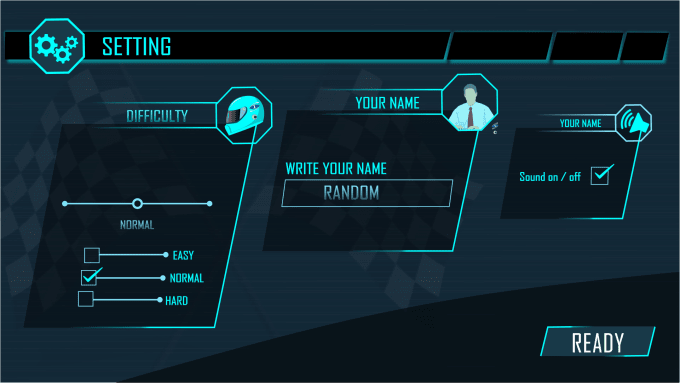New File Creation 5 9

Weirdly enough, after running those 3 commands, some of my sub-folders and files (like composer.json and LICENSE) are displayed using the binary icon.Opening the composer.json in a text editor shows a blank file and the worst thing is that I can't browse some of the sub-folders either, I even tried the additional command as suggested by @DonFaulkner and still no luck. I find a every application of ms office in right click new file create menu but i don't find a some application of ms office in other user please give me a soluion Tuesday, February 19, 2013 6:56 AM. Create a setup package to deploy Windows 10 either from an ISO file you can burn to disc, or throu. Sep 14th 2020, 09:01 GMT Windows 10 64 bit / Windows 10 / Windows 8 64 bit / Windows 8.
In this section, you will save a search as a dashboard panel and add an input element to the dashboard.
Save a search as a dashboard panel
- Start a new search.
- Change the time range to Previous week.
- Run the following search.
sourcetype=access_* status=200 action=purchase | top categoryId
This search returns events from web server access log files for successful (status=200) purchases. The top command automatically returns the count of purchases for each product and the percent each product is of the total purchases.
- Click the Visualization tab. The displays shows a Line Chart.
- Change the Line Chart to Pie Chart.
- Click Save As and select Dashboard Panel.
- Define a new dashboard and dashboard panel.
- For Dashboard, click New.
- For Dashboard Title, type Buttercup Games - Purchases.
The Dashboard ID field displays buttercup_games__purchases. - For Dashboard Description, type Reports on Buttercup Games purchases data.
- For Dashboard Permissions, keep the default setting Private.
- For Panel Title, type Top Purchases by Category.
- For Panel Content, keep the setting for Pie Chart.
- Click Save.
- In the confirmation dialog box, click View Dashboard.
You now have a dashboard with one report panel. To add more report panels, you can either run new searches and save them to this dashboard, or you can add saved reports to this dashboard. You will add more panels to this dashboard in the next section.
For now, let's spend a little bit more time on this dashboard panel.
View and edit dashboard panels
There is a separate view to see a list of the dashboards that you have access to. From this view, you can create dashboards, and make changes to dashboards and dashboard panels.
- Click Dashboards in the App bar to see the Dashboards view.
You might see a pop-up dialog box asking if you want to take a tour about dashboards. If you take the tour, there is an option at the end of the tour to try dashboards yourself. This option displays the Dashboards view.
In addition to the Buttercup Games - Purchases dashboard that you created, there are several built-in dashboards in the list. - For the Buttercup Games - Purchases dashboard, click the arrow ( > ) symbol in the i column to expand the dashboard information.
You can see information about the app that this dashboard is associated with, whether or not the dashboard is scheduled, and the dashboard permissions.
Add controls to a dashboard
You can add input controls, such as the Time range picker, to dashboard panels.
- In the Dashboards list, click Buttercup Games - Purchases to display that dashboard.
- Click Edit.
You can either edit the dashboard using the UI or the Source. With the UI option you can add panels and inputs to the dashboard.- You can use the Add Panel option is used to create a new panel, add a report as a panel, or clone from an existing dashboard.
- You can use the Add Input option to choose from a list of controls to add to the dashboard, including text, a checkbox, and a time range picker.
- You can use the Dark Theme option to change the background appearance of the dashboard. To enable the theme change, you must Save and Refresh the dashboard.
With the Source option, you can edit the XML source for the panel directly. Editing the source directly is not discussed in this tutorial. - Click Add Input, and select Time.
The Time range picker input control appears on the dashboard. - Click the Edit Input icon for the Time range picker. The icon looks like a pencil.
This opens a set of input controls. The Time input type is selected.- For Label, type Time range.
- For Token, replace the default token namefield1. Type BG_Purchases_Time_Range.
The controls that you add to a dashboard have identifiers called input tokens. This step redefines the name of the input token for the Time range picker. The default names for input tokens are field1, field2, field3, and so on. You can change the input tokens when you add controls to your dashboard. Naming the tokens makes it easier to understand which input you are working with. In this example you are using a token name that includes the a short version of the dashboard title. - For Default, change the default time range to Previous week.
- Click Apply.
The input controls that you add to a dashboard are independent from the dashboard panels. If you want the chart on the panel to refresh when you change the time range, you need to connect the dashboard panel to the Time range picker input control. - In the dashboard panel, click the Edit Search icon. The icon looks like a magnifying glass.
- In the Edit Search dialog box, for Time range the default selection is Use time picker. Click to see the options. You want to select Shared Time Picker (BG_Purchases_Time_Range).
- Click Apply.
- In the Edit Dashboard window, click Save to save the changes to the dashboard.
The panel is now connected to the Time range picker input control in the dashboard. This Time range picker is referred to as the shared time picker. The inline search that powers the panel now uses the time range that is specified in the shared time picker.
You can have dashboards that contain a mix of panels. Panels that are connected to the shared Time range picker, and panels that show data for the time range specified in the search that the panel is based on.
You will learn more about connecting other panels to the shared time picker in the next section.
Next step
Learn about adding more panels to a dashboard.
See also
About the Dashboard Editor in Dashboards and Visualizations
- Apache HttpClient Tutorial
- Apache HttpClient Resources
- Selected Reading
Using HttpClient, we can perform Multipart upload, i.e., we can upload larger objects insmaller parts. In this chapter, we demonstrate the multipart upload in HTTP client by uploading a simple text file.
In general, any multipart upload contains three parts.
Arturia trida pre v1 0 0 264 download free. Initiation of the upload
Uploading the object parts
Completing the Multipart upload
For the multipart upload using HttpClient, we need to follow the below steps −
Create a multipart builder.
Add desired parts to it.
Complete the build and obtain a multipart HttpEntity.
Build request by setting the above muti-part entity.
Execute the request.
Following are the steps to upload a multipart entity using the HttpClient library.

Step 1 - Create an HttpClient object
The createDefault() method of the HttpClients class returns an object of the class CloseableHttpClient, which is the base implementation of the HttpClient interface. Using this method, create an HttpClient object −
Step 2 - Create a FileBody object
FileBody class represents the binary body part backed by a file. Instantiate this class by passing a File object and a ContentType object representing the type of the content.
Step 3 - Create a MultipartEntityBuilder
Help File Creation
The MultipartEntityBuilder class is used to build the multi-part HttpEntity object. Create its object using the create() method (of the same class).
Step 4 - Set the mode
A MultipartEntityBuilder has three modes: STRICT, RFC6532, and BROWSER_COMPATIBLE. Set it to the desired mode using the setMode() method.
Step 5 - Add various the desired parts
Using the methods addTextBody(), addPart() and, addBinaryBody(), you can add simple text, files, streams, and other objects to a MultipartBuilder. Add the desired contents using these methods.
Step 6 - Building single entity
You can build all these parts to a single entity using the build() method of the MultipartEntityBuilder class. Using this method, build all the parts into a single HttpEntity.
Step 7 - Create a RequestBuilder object
New File Creation 5 9 0
The class RequestBuilder is used to build request by adding parameters to it. If the request is of type PUT or POST, it adds the parameters to the request as URL encoded entity.
Create a RequestBuilder object (of type POST) using the post() method. And pass the Urito which you wanted to send the request it as a parameter.
New File Creation 5 990-n
Step 8 - Set the entity object to the RequestBuilder
Set the above created multipart entity to the RequestBuilder using the setEntity() method of the RequestBuilder class.
Step 9 - Build the HttpUriRequest
Build a HttpUriRequest request object using the build() method of the RequestBuilder class.
Step 10 - Execute the request

Using the execute() method, execute the request built in the previous step (bypassing the request as a parameter to this method).
Example
Following example demonstrates how to send a multipart request using the HttpClient library. In this example, we are trying to send a multipart request backed by a file.
Output
Media Creation File
On executing, the above program generates the following output −

New File Creation 5 9
UNDER MAINTENANCE